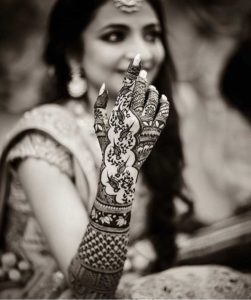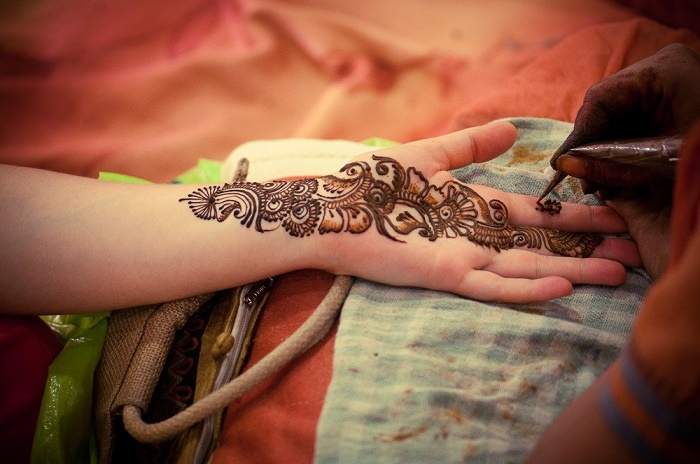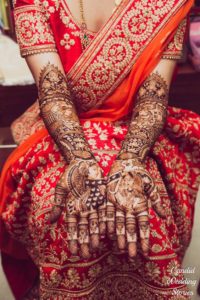A mehendi party is a fun event during the wedding season. But more than an event or party, it is a tradition, and in some families, an important part of the wedding itself. India gets to see the most diverse wedding rituals and traditions. One of the most important and fun pre-wedding ceremonies in Indian marriages, some families also conjoin mehendi and sangeet ceremony and make it a grand affair. In all this diversity, there is just one constant thing and that is a mehendi party.
Historical background
Did you know? Mehendi is considered as the oldest form of body art that has ever been into existence. The word ‘mehendi’ comes from a Sanskrit word, ‘mendhika’, which refers directly to the henna plant itself. The usage of mehendi dates back to the time prior to the Vedic Age. Traces of henna being used in mummification have also been found. Also, it is believed that the beautiful princess, Cleopatra used henna to paint her body.
Traditional Ritual
Applying mehendi to the bride and the groom before the wedding is one of the oldest Indian traditions. The ceremony entails an elaborate application of mehendi designs on a bride’s hands and feet. Application of mehendi comes under the solah sringar of a newbie or to-be bride. As for the groom, a mere token of application of henna is a mark of good omen.
As a wedding tradition, it is followed in many parts of India as well as in neighbouring countries of Pakistan, Bangladesh and Nepal. Mehendi is quite popular among Muslims as well. Mehendi ceremony is an important pre-wedding ritual, observed in the Indian subcontinent and many Arabic nations.
Significance of Mehendi
Mehendi represents the holy bond of matrimony and is, therefore, considered a shagun (sign of good luck). It signifies the love and affection between the couple and their families. Here are some popular beliefs that are associated with this tradition:
- The darkness of the mehendi colour on a bride’s hand represents the deep love between the would-be-couple.
- The mehendi’s colour also shows the love and understanding between the bride and her mother-in-law.
- The longer the mehendi retains its colour, the more auspicious it is for the newlyweds.
- Mehendi is also deemed to be a symbolic representation of fertility.
Mehendi is known for its medicinal properties. Its herb is also very beneficial for the growth of nails. It has a cooling effect that soothes stress, headaches and fever. Probably, mehendi relieves the bride and the groom of all the wedding stress.
 The ceremony
The ceremony
In the intricate design of the bride’s mehendi, the groom’s name or his initials are also hidden. Some bride’s nowadays, chose to sport it quite visible in the front. Some rituals also have it that during the post-wedding ceremonies, the groom has to find his initials in the bride’s mehendi adorned hands. This is a fun ice-breaking game for the couple, which also helps them to establish some intimacy.


